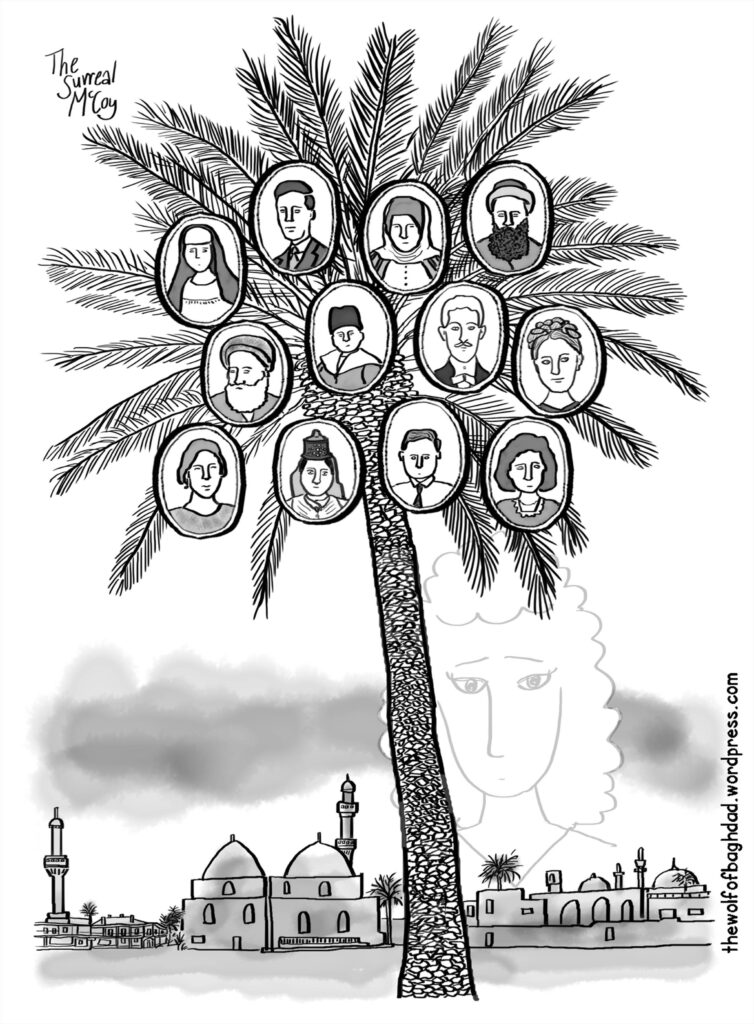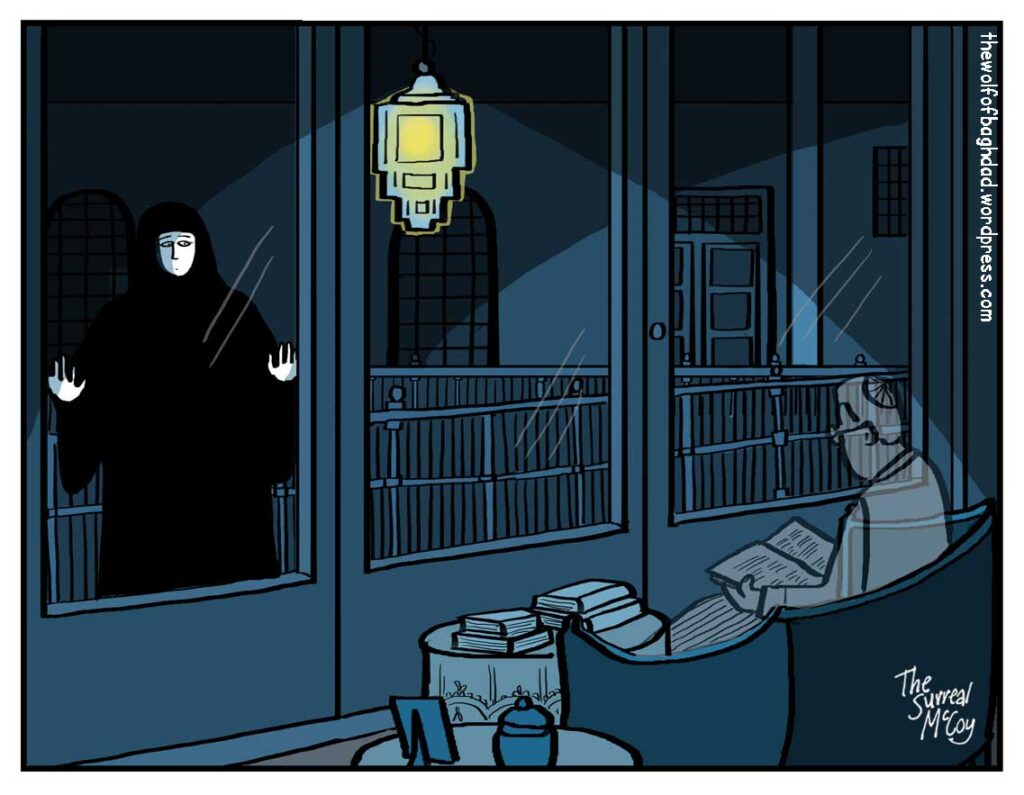
How do you draw a place you’ve never visited and only heard spoken about in soft voices? The lost world of my Iraqi Jewish family has always fascinated me. Growing up in London, I heard only the happy memories: how they were in and out of each others’ houses every day, the closeness of non-Jewish friends and neighbors, the strong sense of community in Baghdad’s ancient Jewish Quarter. It sounded like a warm and welcoming place to live, but I often wondered, what did it actually look like?
We hardly had any photos of the family home, certainly none of the city itself, and I could find very little from that era online. During the research and development phase of The Wolf of Baghdad, I kept a blog. To my astonishment, I learned that some students in Baghdad had found it and were following me, curious to know what I was working on. When I explained that I didn’t know what the houses in the old Jewish Quarter looked like, they offered to help by taking photos for me. It was painful to see those grand, beautifully designed old houses looking so decrepit and forlorn. Empty of people, they had been left to rot and crumble away, the mezuzahs long prised from their doorways. Those intricately carved shanasheel (wooden balconies) from where, unseen, one could spy on the goings on below in the alleyways, were all broken and had collapsed. Nobody lives there now.

At least drawing the people who once inhabited them was easier. Some I drew as children, excitedly running across courtyards and up the stairs onto the roof of their homes or effortlessly navigating the crowded, narrow alleyways to get to school. My other family members were drawn as adults, going about their daily business in the souks and the streets seamlessly blending in, both in dress and dialogue, with the local population. I depicted all of them as shadowy, diaphanous figures, flitting through the streets and houses of the city that had been their home for so long. I remembered someone in my family once saying “Even if we could go back to Baghdad it would be as Jewish ghosts.” Those words haunted me.
By then I had started asking difficult questions of my family. Why did they have to leave? What had happened to them, and how did they feel about it? Tell me, I asked, not only about the good but about the bad memories as well. It was so sad to hear their answers and then have to draw the book to its mournful conclusion. Their testimonies shaped the story arc of the book and their memories inspired the drawings. The Wolf of Baghdad is family history drawn to life, and I will always be grateful for their generous contributions.


The Wolf of Baghdad, written by Carol Isaacs, UK: Myriad Editions, 2020.
An adaptation of The Wolf of Baghdad specifically for middle-grade readers will be available next year. Called The Cloak From Baghdad, it will be published by Lerner Books and is more of a traditional graphic novel with dialogue aimed at 9–12 year olds.


